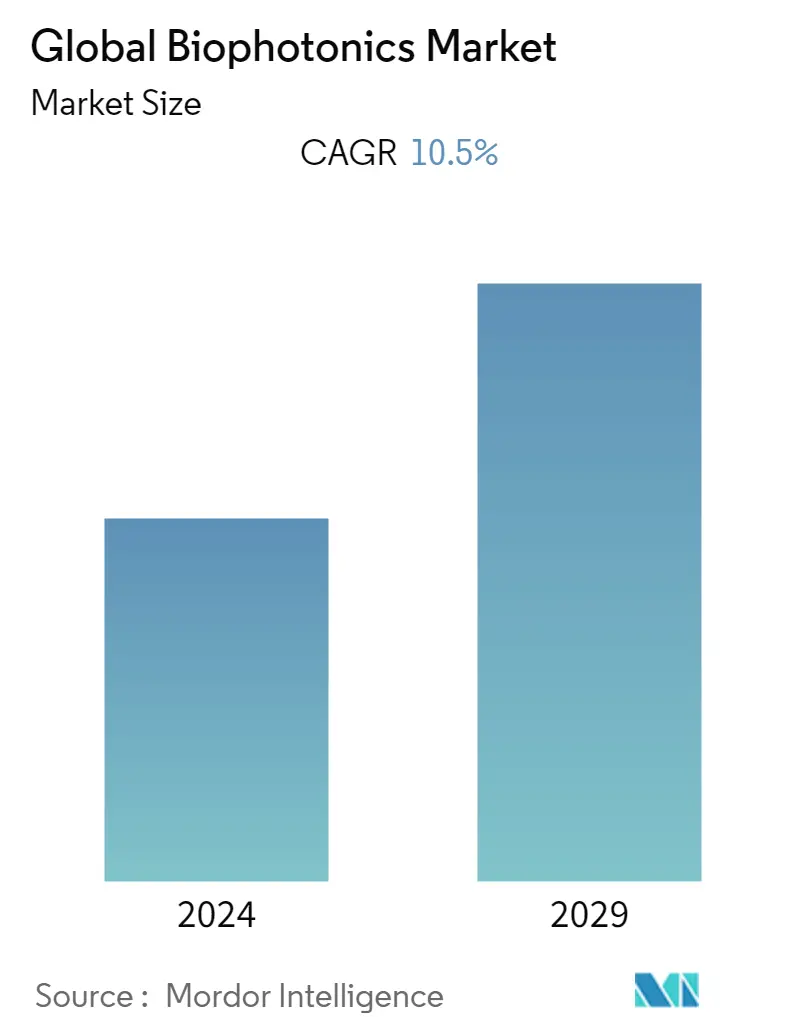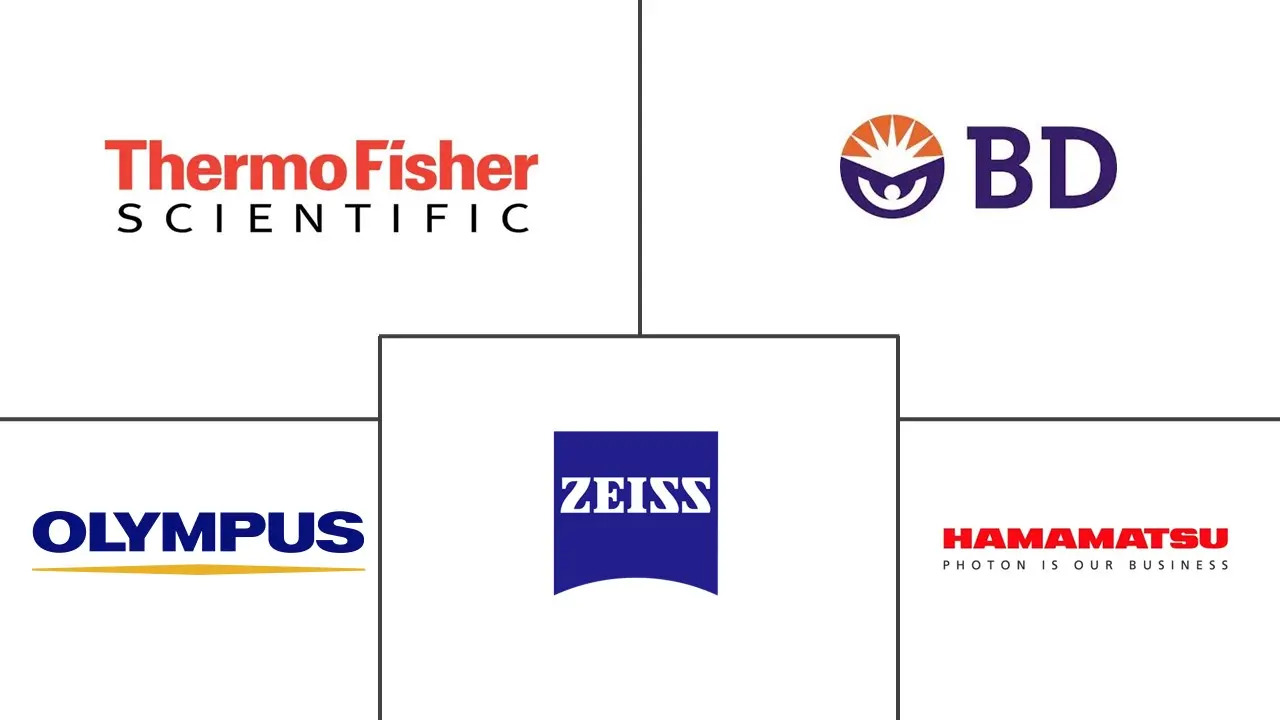Market Size of Global Biophotonics Industry

| Study Period | 2019 - 2029 |
| Base Year For Estimation | 2023 |
| CAGR | 10.50 % |
| Fastest Growing Market | Asia Pacific |
| Largest Market | North America |
| Market Concentration | High |
Major Players
*Disclaimer: Major Players sorted in no particular order |
Need a report that reflects how COVID-19 has impacted this market and its growth?
Biophotonics Market Analysis
The Biophotonics Market is poised to grow at a CAGR of 10.5% in the forecast period (2022-2027).
The COVID-19 outbreak had an impact on the biophotonics market because end-user facilities, such as hospitals and other healthcare services, were heavily impacted due to government norms, such as social distancing, across the world. Additionally, the COVID-19 pandemic affected the economy and impacted the functioning of hospital care for non-COVID-19 patients in hospitals and other end-user facilities across the world. For instance, in December 2021, a report published in the National Library of Medicine stated that antiviral photodynamic therapy (aPDT) might improve the efficacy of photobiomodulation therapy (PBMT) and aPDT by using monoclonal antibodies and preparing new photosensitizers at the nanoscale that target the lung tissue specifically. Similarly, in October 2020, a paper named 'Photodynamic therapy for COVID-19" was published, which stated that in some clinical settings, there might be an incremental benefit in combining photodynamic therapy and sonodynamic therapy. However, the norms of the governments and the preference for other therapies are expected to hinder the overall market growth.
The key factors propelling the growth of this market are the growing geriatric population, increasing use of biophotonics in cell and tissue diagnostics, the emergence of nanotechnology in biophotonics, and the development of novel photoacoustic tomography (PAT) systems. Research in biology has shifted from the level of the cell to viruses and cellular constituents, such as proteins and nucleic acids. Tools for the investigation of these constituents must operate on the same scale, shifting focus from micro-scale to nanoscale. As a result, nanotechnology's applications in imaging biological processes for analyzing biological materials have been increasing. Gold and iron nanoparticles are used in biomedical imaging. For instance, in February 2022, as per the article by science direct estimates that the gold nanoparticle is used by researchers of the University of Rochester on the tip of an optical fiber as an antenna to enhance the fluorescence of labeled proteins in the cell membrane. Gold nanoparticles are also used along with a laser to destroy cancer cells. In comparison, silica nanoparticles are less toxic than gold nanoparticles and can be targeted against specific pathogens or tumors.
These nanoparticles can also carry chemotherapy drugs directly to tumors, reducing the harmful effects of these drugs on the body. The increasing benefits of biophotonics are expected to drive the market. However, the lack of awareness of biophotonics technology skilled personnel and the high cost of technology is hampering the growth of the market.
